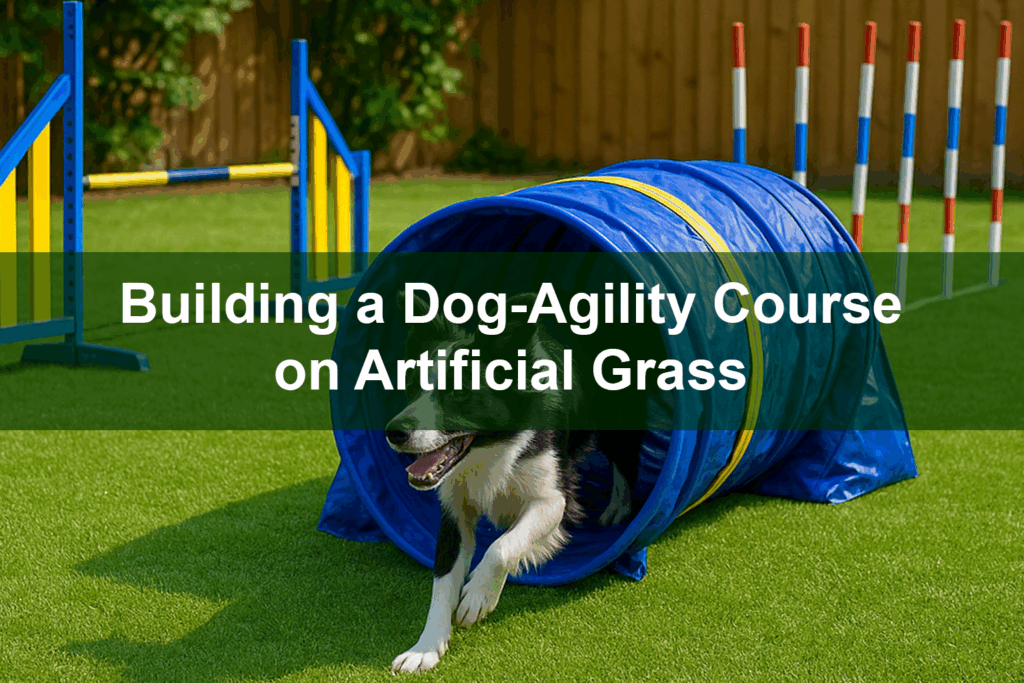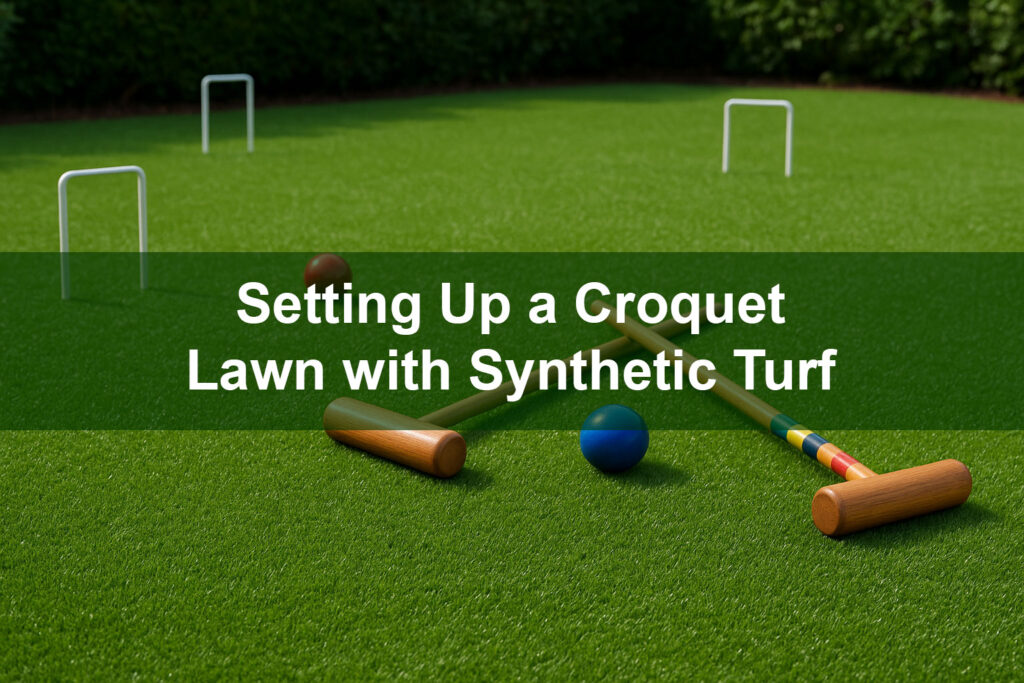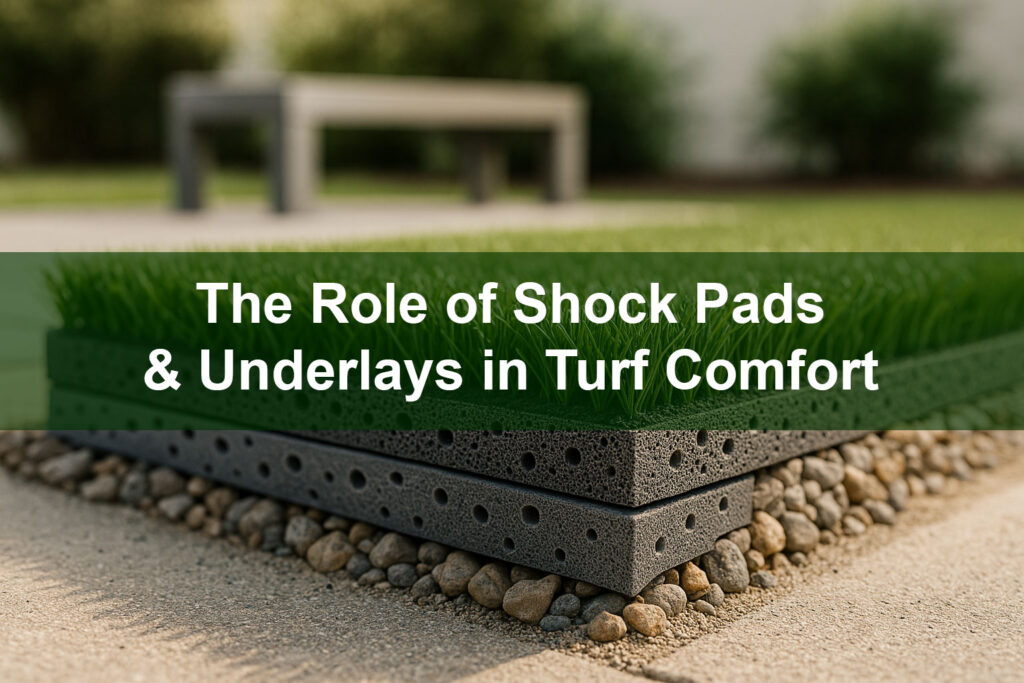Dog agility courses are a fun, engaging way to exercise your pet, improve their obedience skills, and strengthen your bond together. Whether you’re a competitive trainer or a pet parent looking for a backyard activity, building your agility setup on artificial grass is a smart choice. Turf provides a safe, durable, and low-maintenance surface that stands up to heavy use while keeping your pup comfortable. Let’s walk through everything you need to know about creating the perfect dog-agility course on synthetic turf.
What You’ll Learn
- Why artificial grass is ideal for dog agility courses
- Planning and layout considerations for your space
- Essential agility equipment to include
- How to prepare the base and install turf for dogs
- Safety and comfort features to add
- Maintenance tips to keep your turf in top condition
- Examples of backyard and professional agility setups
- How agility training benefits dogs physically and mentally
1. Why Artificial Grass Works for Agility Courses
Artificial grass offers advantages over natural lawns and hardscapes when it comes to agility training. Turf provides a cushioned, non-slip surface that reduces the risk of injuries from running, jumping, or sudden turns. Unlike natural grass, it won’t develop mud patches, bald spots, or uneven surfaces. It’s also easy to clean, draining quickly after rain or washes, and designed to handle heavy paw traffic without wearing out.
2. Planning Your Agility Course Layout
Before installing turf, map out the agility course. Consider your dog’s size, breed, and skill level to determine the equipment and spacing needed. Standard courses include obstacles like jumps, tunnels, weave poles, and ramps, which require ample room for safe approaches and exits. For backyard courses, keep things scaled appropriately—small breeds may need shorter jumps, while larger dogs require more running space.
3. Essential Agility Equipment
A well-rounded agility course typically includes:
- Jumps: Adjustable bars for different skill levels.
- Tunnels: Collapsible fabric tunnels for speed and fun.
- Weave poles: A line of poles dogs weave through in sequence.
- A-frame ramps: Large triangular ramps for climbing and descending.
- Pause tables: Platforms where dogs must pause for a set time.
- Hoops or tires: Circular jumps to improve coordination.
4. Preparing the Base and Installing Turf
Durability and drainage are key when installing turf for dog agility. Start with a compacted aggregate base, ensuring proper slope for drainage. A shock pad underlay adds cushioning and reduces joint stress for active dogs. Select turf designed for pets, which features strong backing, antimicrobial infill, and perforations for drainage. Secure seams carefully to prevent tripping hazards, and use pet-safe infill that won’t cling to fur or paws.
5. Adding Safety and Comfort Features
Your dog’s safety should be the top priority. Consider these upgrades:
- Shock pads: Extra cushioning for joints.
- Non-toxic infill: Options like coated sand or TPE are safer than crumb rubber.
- Shade structures: Prevent overheating on sunny days.
- Perimeter fencing: Keeps your dog secure during training sessions.
6. Maintenance Tips for Dog Agility Turf
Maintaining turf for an agility course is simple compared to natural lawns. Rinse the surface regularly to remove dirt, fur, or pet waste. Brush fibers occasionally to keep them upright and evenly distributed. Check seams and infill levels to ensure a consistent, safe surface. With basic care, your turf will last for years of training and play.
7. Backyard and Professional Agility Course Examples
Backyard courses often include a few core obstacles like jumps, tunnels, and weave poles, giving pets a safe space for exercise. Professional setups, such as those used in competitions, include a full suite of obstacles laid out to challenge speed, agility, and obedience. Both benefit from turf surfaces that provide reliable traction and durability.
8. Benefits of Agility Training for Dogs
Agility training isn’t just about competition—it’s about building a stronger bond with your dog. Benefits include:
- Physical health: Improves strength, endurance, and coordination.
- Mental stimulation: Keeps dogs engaged and reduces boredom.
- Confidence building: Helps shy or anxious dogs develop trust and focus.
- Bonding: Strengthens communication and teamwork between owner and dog.
Conclusion
Artificial grass provides the perfect foundation for a dog agility course, combining safety, durability, and ease of maintenance. By choosing the right turf, planning your layout, and equipping your course with essential obstacles, you can create a space where your dog thrives both physically and mentally. Whether you’re training for competition or simply having fun, synthetic turf makes agility training more enjoyable for both you and your four-legged friend.
Want to create a dog-friendly yard? Contact Buy-Grass.com today to learn more about turf solutions designed for pets and agility training.







